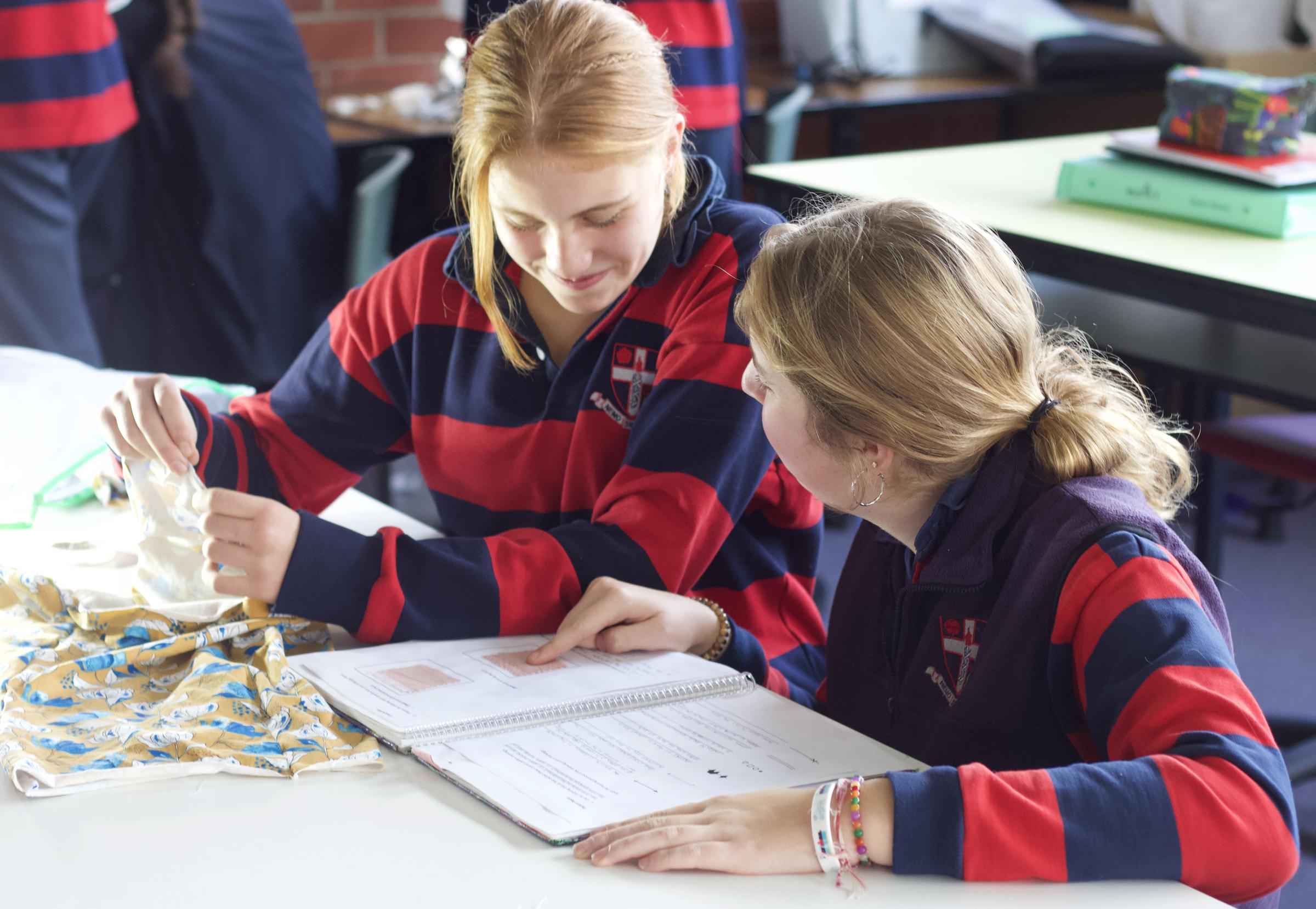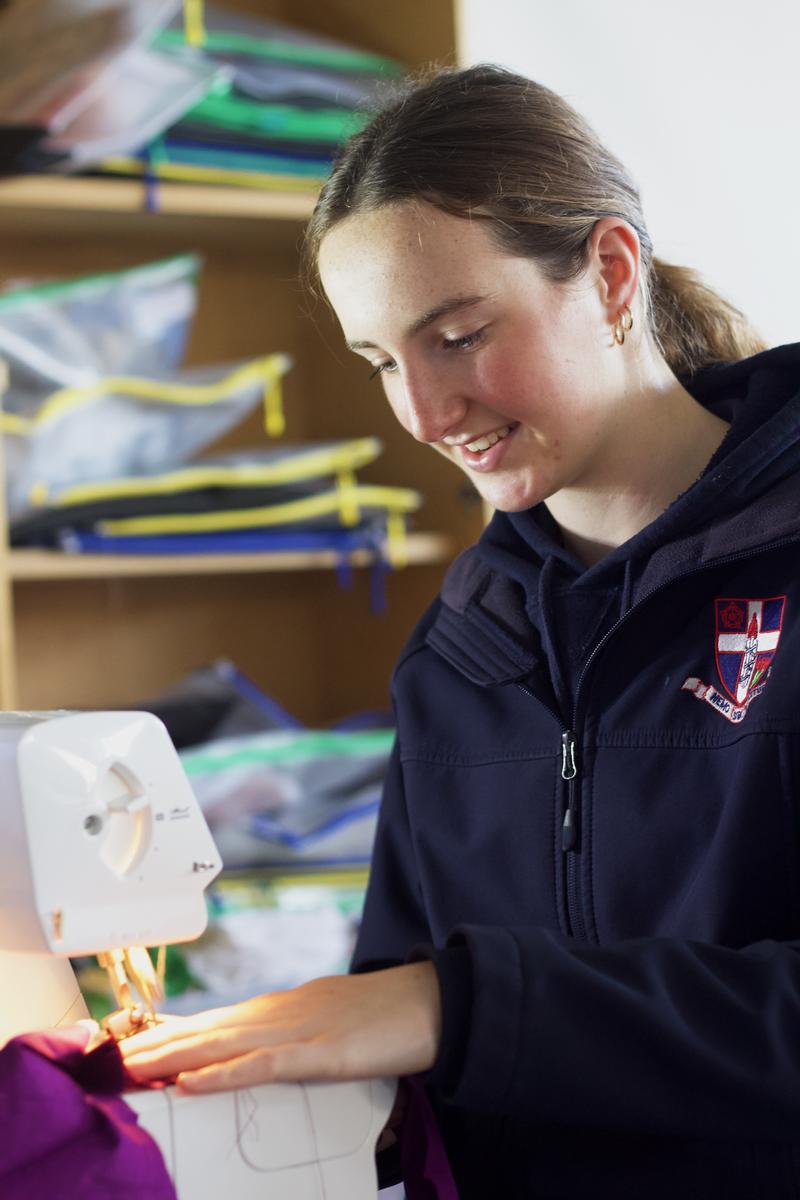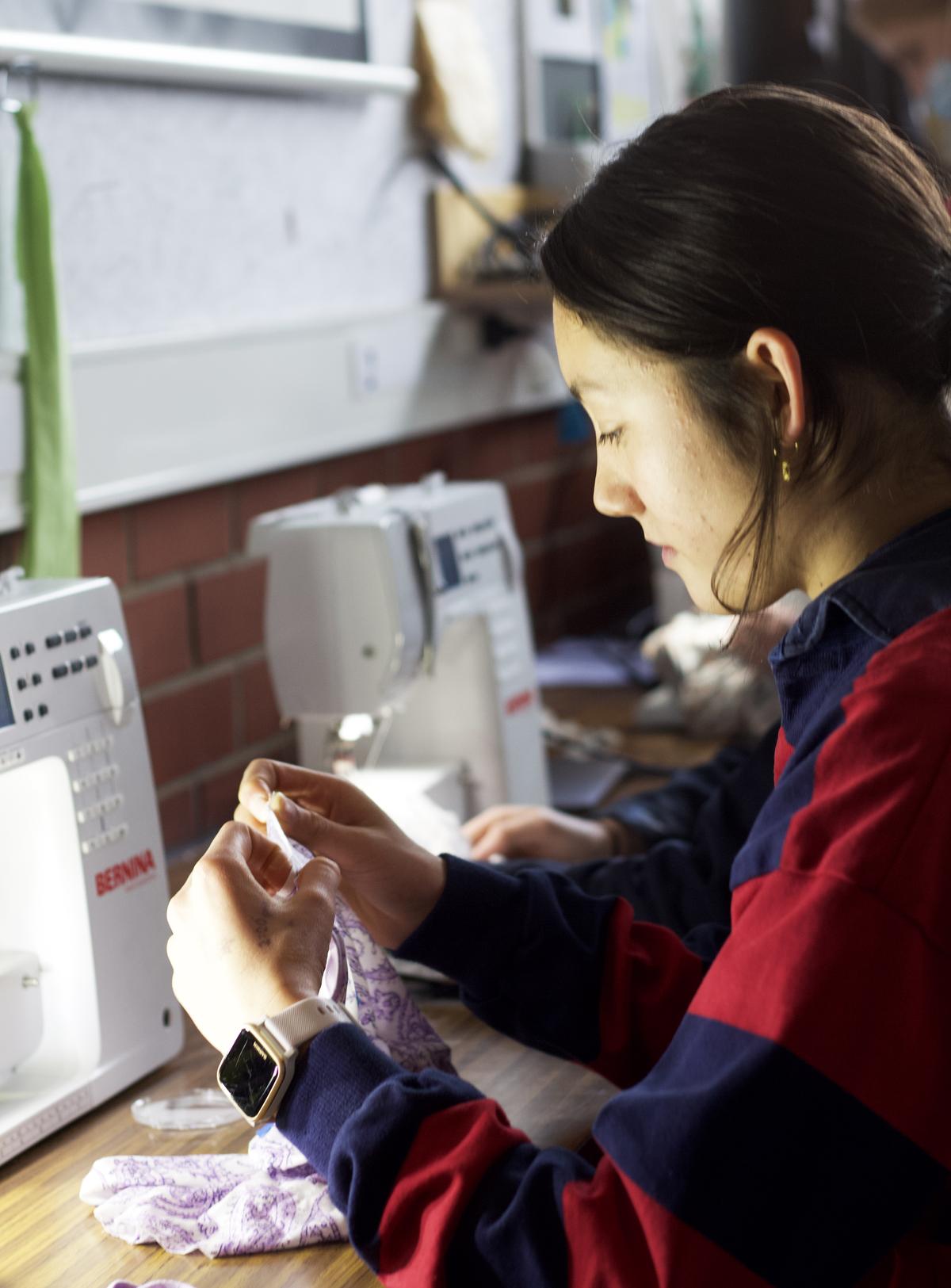Textiles
TECHNOLOGY FACULTY

Textiles
TECHNOLOGY FACULTY
| 🎓 Course Type | Elective |
|---|---|
| 🧩 Units | 1 - 4 |
| 🗓 Timing | Semester 1: Textiles 1 (Year 9) and Textiles 3 (Year 10) Semester 2: Textiles 2 (Year 9) and Textiles 4 (Year 10) |
| ⏱ Hours per week | 3 |
| 📚 Prior Experience | Not required. |
| ✏️ Selection | Possible to commence study with any of the above units. |
| 🧭 Future Pathways | Design and Production/Textiles; UTAS Connections Program - Object Design/Textiles |
Students who choose to study Textiles can complete two units per year. The four units in each course are usually taken sequentially to form a two-year course.
In all units, students will undertake a range of practical projects to further develop existing construction and design skills and many opportunities will be provided to explore and develop creativity. Basic skills and knowledge are extended beyond the Year 8 level, however, students can undertake the course without having completed the Year 8 course.
In Textiles, efficient construction techniques are taught and students work from a Design Brief that encourages them to plan their own learning and skill development.
The focus for these units is process and production skills plus an element of design work. Practical projects are offered that aid the development of sound construction skills and could include a quilt, purse/bag and/or an item of clothing such as a hooded jumper, pyjamas, track pants, shorts, or a skirt. Students will also learn about fibres, yarns, and fabrics and how to select the best material for an end-use.
The focus for these units is creativity and design. Students will have the opportunity to explore a range of textile embellishing techniques that could include fabric dyeing; decorative machine stitching; free-motion machine stitching, hand stitching, and beading; distressing fabric using heat guns, soldering irons, rust, bleach, and stitch; creating new, unique fabric from scraps and dissolvable materials; and making and working with felt.
Practical projects could include book/journal covers; fabric jewellery boxes; jewellery items; cushion covers; floor cushions; soft toys/teddy bears; and/or wearable-art pieces. As well, students will explore ways to refashion textile items and produce something new from something old.
Assessment is based on each student’s achievement in the theoretical and practical aspects of the subject as well as their ability to work independently and in a group situation.



